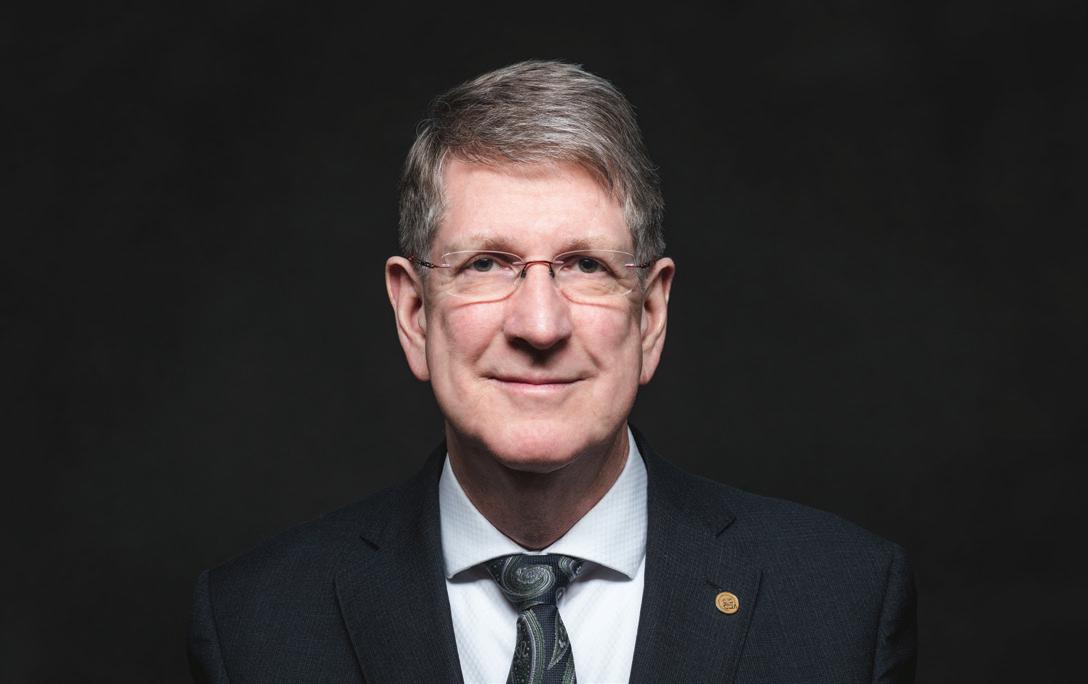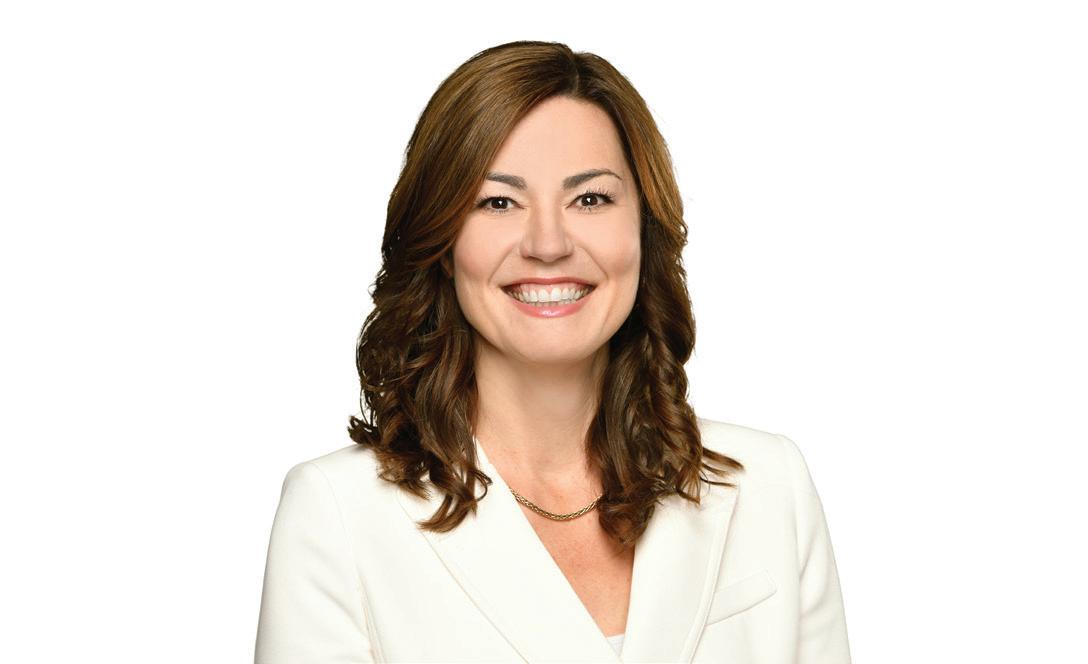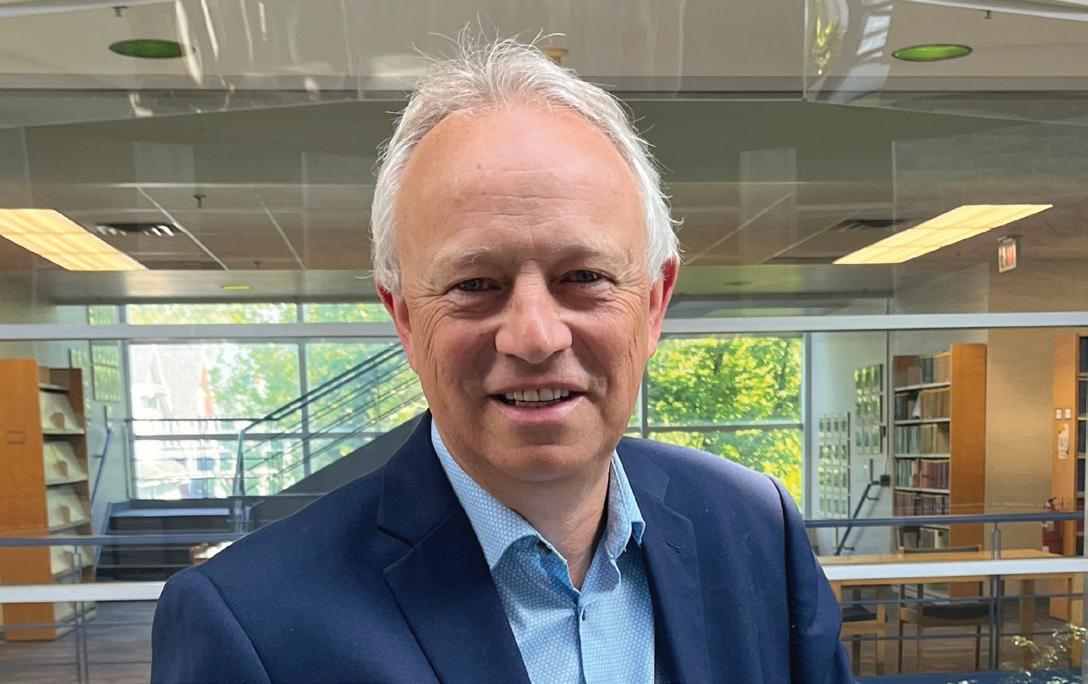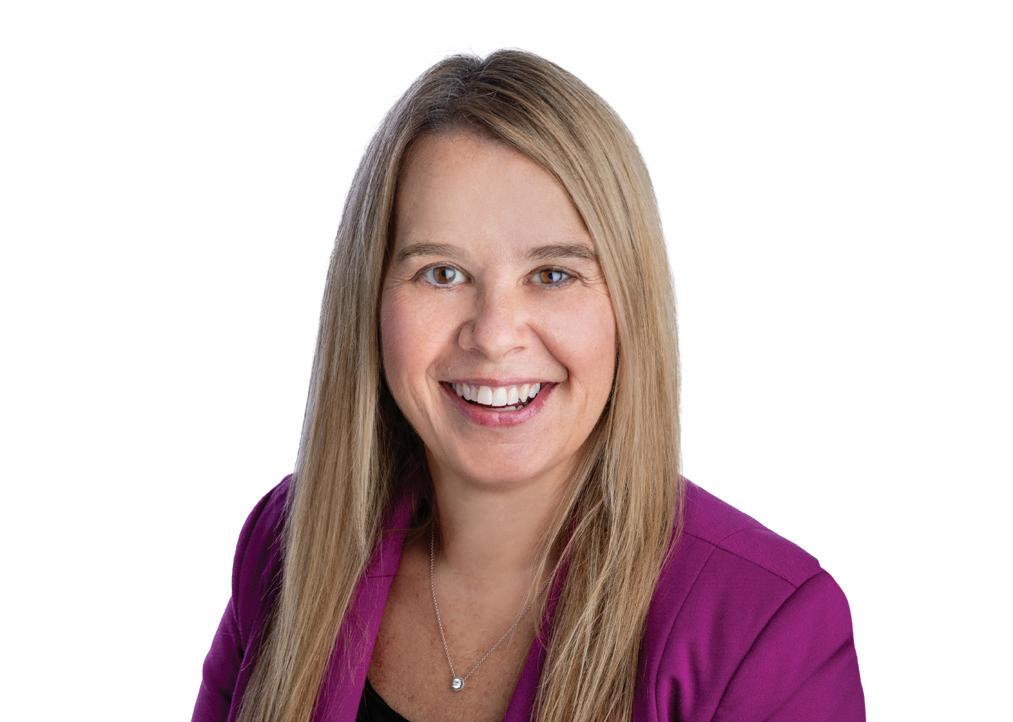
7 minute read
FINDING PURPOSE IN THE FACE OF TRAGEDY


Advertisement



Schulich Law alumni reimagine community safety through the Mass Casualty Commission.


BY TAYLOR JONES
When J. Michael MacDonald (’79) was approached to lead what would become the Mass Casualty Commission, he knew three things. It would involve sustained and considerable exposure to traumatic and graphic evidence and experiences. There would be long days, evenings and weekends of work ahead. And it was an urgent and vital undertaking that would require considerable care and efficiency to see it through. However, the biggest question was if the newly retired MacDonald wanted to take it on.
“I was hesitant, but the more I thought about it, the more I recalled what my father once said: ‘If you’re asked for a favour and you are able to do it, you really don’t have a right to say no,’” MacDonald says. “This province has been very good to me, and I knew it was going through a very dark time. I felt compelled to step up and, from that point, I did not stop working for 29 months.”

That willingness to contribute typifies the many Schulich School of Law alumni who participated in the commission, which was established in the wake of the April 18-19, 2020, mass casualty in Nova Scotia. They helped build the team that took on this enormous task. They worked on foundational documents that established what happened before, during and after those two days. They reviewed research related to the issues established in

One key addition to the team was Jennifer Cox (’94), K.C., as commission counsel. A staff lawyer at Dalhousie Legal Aid Service (DLAS), Cox had previously worked on two major public inquiries: the wrongful conviction of David Milgaard and the National Inquiry into Missing and Murdered Indigenous Women and Girls. “People who work on inquiries are relatively rare,” she says. “The lessons I learned from my experiences were things that wanted to share. But I also live in the area, so it became an opportunity to contribute to the community.”

Cox’s motivations are echoed by Roger A. Burrill (’85). A long-time public defender, he took on the role of senior commission counsel. Although Burrill lacked inquiry experience, he believed his extensive expertise in presenting evidence would be advantageous to the commission. As it turned out, he was right, but even that background did not fully prepare him for an undertaking like this.
“The whole process of the inquisitorial system differs from the adversarial system,” Burrill says. “That became clear quickly. I also realized that it was too big a job for me to take on alone.”
“I’ve developed protective processes,” Cox explains. “If there are things I don’t need to look at, I don’t look at them because I don’t need that image in my brain. I’ve also learned I can express myself in the work while I’m conducting it. There were times during the proceedings for the Missing and Murdered Indigenous Women and Girls inquiry that I did show emotion, and I think the families involved appreciated that.”
The long hours and the subject matter at hand were often challenging for commission members. So too were the added pressures of conducting this inquiry in the midst of a pandemic. Hanson says the entire investigation team was hired from outside Nova Scotia, which meant they had to isolate for two weeks upon arrival. Moreover, despite consultation with Dr. Robert Strang, Nova Scotia’s Chief Medical Officer of Health, on how to proceed safely, she adds that nearly everyone became sick at some point. Such was the commitment from the team that everyone worked through illness and through the aftermath of Hurricane Fiona.
On March 30, 2023, the Mass Casualty Commission delivered its final report, Turning the Tide Together, to the federal and provincial governments. Its seven volumes contain 130 recommendations that, combined, form a blueprint for making communities across Nova Scotia, and Canada, safer. For MacDonald, one of the key takeaways is the need to reimagine policing.
“I think recent news reports indicated there were only two or three recommendations from that inquiry that have actually been completed,” she says. “Still, I have hope that this commission and its recommendations have benefitted and will benefit from that previous inquiry in terms of policing issues because some of them are the same. Ultimately, this might be the turning point in Canadian history where people look at these issues more critically than they have and realize this is something that needs to evolve.”
The report’s recommendations are now in the hands of an implementation committee, which is led by another Schulich Law alum, Linda Lee Oland (’76). It has a one-year mandate that not only clarifies what needs to happen but who is responsible for bringing each recommendation to fruition. MacDonald firmly believes, overall, that the commission’s work is in good hands and is optimistic about possible outcomes.
“This has the potential to be a game changer,” MacDonald says. “But it needs political will. I want the Prime Minister and the premier to go to their people and say, ‘Get this done.’ I just hope that the work we have done motivates them to do that.”

Joined by colleagues Anna Mancini and Lee Seshagiri (’06), Burrill led the effort to create the foundational documents that would guide the commission in developing recommendations. This was no small feat. There were 75,000 disclosures to sift through and evidence from 17 different crime scenes. Gradually, Burrill and his colleagues began to piece together a timeline of what happened over the course of April 18 and 19. This, says MacDonald, was invaluable in enabling the commission to proceed with its work. “We realized we could not call approximately 250 witnesses in two years to do that,” MacDonald says. “I've been a judge long enough to know that would be a seven-year project. This approach made the process more efficient, giving us something we could present to the participants and their lawyers so that material issues could be resolved. But it also made the process much more trauma informed because only those who had to review it were exposed to the documents.”
While Burrill’s role was laser-focused on determining what happened, Cox functioned more as a jack-of-all-trades. This included leading community outreach efforts and holding meetings to engage participants. In the beginning, 20-hour workdays and seven-day work weeks were not uncommon. Although the commitment of time and energy was significant, Cox was able to acclimate relatively easily, given her previous inquiry experience. She was also able to draw on that experience to manage some of the more disturbing aspects of participating in this inquiry, in particular gun and intimate partner violence.
As much as the team’s commitment was rooted in a desire to achieve positive outcomes, it was also bolstered by key supports and considerations built into the initiative from the start. For example, all participants and commission team members had access to mental health and wellness experts, and Hanson negotiated leave agreements for many team members so that they would have a job to return to once they wrapped up their work with the commission.

“Traditionally, there is a 30 percent attrition rate for public inquiries, which is pretty high,” Hanson says. “We really worked hard to address that, and I think our efforts paid off. We had almost no attrition at all.”
MacDonald adds that the mental health component was essential. “That was one of two things that, personally, helped me get through this process—those experts and my family. With that said, I did have to put my role as father, grandfather and husband on hold for a time.”
Although the process was often tough for the team, Hanson says the commission was mindful of the impacts for the families of the victims. It covered the cost of their legal counsel and provided them with access to mental health supports. She took heart from this and from how supportive they were of one another.
“The families were extremely engaged throughout the process, even when they did not necessarily agree with every decision that the commissioners made,” Hanson says. “I was really impressed by that devotion and bravery. As difficult as it was for them, they really showed up in a big way.”
“I am not sure when it started but society’s woes seem to have defaulted to policing, probably because they are operating 24 hours a day,” MacDonald says. “The police aren’t comfortable with that, and the public aren’t well served by it. That’s why we need to reimagine it. And let’s not call it policing. Let’s call it community safety because it’s a shared responsibility that involves the police, community organizations, you and me.”
Hanson sees a huge appetite to explore this issue, and how policing could and should operate in different communities, such as rural ones. But for her, it is the report’s extensive recommendations related to intimate partner violence that are encouraging. More than calling for additional resources and supports for victims, the recommendations advocate for interventions focused on perpetrators. That all-encompassing approach is cause for optimism for her. “Many consider this to be an intractable issue, but it’s not,” she says. “There is a lot that can be done, and the recommendations outline how police and other agencies can better assist those who face this violence in their lives.”
All these recommendations are encouraging for Cox, as is the actioning of mental health and additional support services for Colchester County. More than a relief for her, she sees that action as an indicator that the recommendations will become achievements over time. However, the progress she is seeing on the recommendations to date is also a source of some frustration for her both as an Indigenous lawyer and based on the outcomes of the National Inquiry for Missing and Murdered Indigenous Women and Girls.
Hanson shares those hopes but cautions progress could be slow. Ultimately, she believes anything less than the adoption of most of the report’s recommendations would be a lost opportunity. “Some of the best minds in the world helped the commissioners come up with these recommendations and conclusions,” she says. “That is not a luxury that you have all the time. I believe that helped us arrive at the right answers. More importantly, I believe there is a real shared commitment to see these recommendations through. And my hope is that it won’t take too long.”










